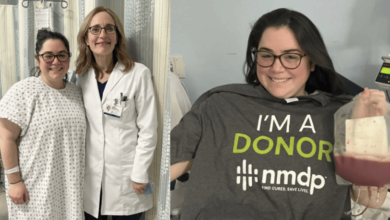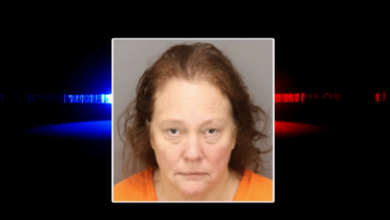4th of July Feature: America’s Nursing History

On a day when we all pause to celebrate our country’s origin story, it seems fitting to take the opportunity to reflect on America’s nursing history as well. The nursing profession developed steadily over time, with hospital and nursing care evolving alongside it, making significant strides for formalization, education, and recognition through dedication, persistence, and advocacy.
Who is Florence Nightingale?
Florence Nightingale is widely known for her efforts to establish the nursing profession. Credited as the founder of “modern nursing,” Nightingale trained basic nursing skills in Germany and worked as the administrator for a hospital in London until the Crimean War broke out and reports of terrible conditions and incompetence in treating wounded British soldiers reached London. In 1854, Nightingale and 38 women nurses went to the hospital where the injured soldiers convalesced and got to work.
Nightingale earned respect and renown during the Crimean War by purchasing supplies, prioritizing and organizing cleanliness, establishing standards of care, and substantially lowering the soldier mortality rate. She also notably acknowledged a need to address the emotional-psychological needs of the soldiers by ensuring letters to loved ones were written for soldiers unable to do so and provided recreational and educational outlets. Throughout the experience, Nightingale took detailed notes (as every modern-day nurse does), which later proved instrumental, as her data and observations were used to support major medical reform for the British military.
In 1860, Nightingale opened the Nightingale School of Nursing in London, where a formalized and respectable nursing education was finally made available to women. Her school became a model for nursing education that spread, as did many of her nursing concepts, statistical methods, and informative publications.
Nursing Education History in America
Florence Nightingale was an English woman, and her work itself was not done in America. Yet, her efforts to formalize nursing education crossed the Atlantic Ocean and inspired nursing schools to open here as well. The first opened in 1872, and three more in 1873. Linda Richards, known as the first professionally trained nurse in the United States, graduated from the first nursing school and went on to be superintendent for Bellevue Training School in New York City, where she oversaw a strengthened and diversified nursing curriculum, the use of medical accessories was implemented (watches and thermometers). The housekeeping chores were removed from nurse responsibilities and relegated to support staff to give nurses more time for direct patient care. Richards went on to mentor under Nightingale and opened nursing schools in Japan, and when she returned to the United States, she continued her work for nursing education. Nursing education continued to grow, and 60 years after the first nursing school opened (1930), our country had almost 300,000 trained nurses. Today the profession has grown to over 3 million employed registered nurses.
What did the American Nurses Association (ANA) Form and Why?
The American Nurses Association was organized in 1896 to formalize licensure for nurses, create a code of ethics to guide nurses, and spotlight nursing as a legitimate profession due to fair wages. In service to meeting their goals, the ANA held its first convention in 1898. In 1900 the first American Journal of Nursing was published and distributed, and in 1901 state nursing organizations became affiliates laying the path for what would lead to state nurse licensure regulation.
When Did the Nursing Shortage Begin?
Over the years, the supply and demand of nurses have ebbed and flowed, with periodic shortages occurring in the 70s, 80s, and 90s and then leveling out. The beginning of the nursing shortage we are currently in is correlated to when the Baby Boomers’ generation reached retirement age. As this generation ages from elderly to frail elderly, their healthcare needs become more complex and require more care. By 2030, the Baby Boomer generation (projected to be 61 million people) will all be 64 or older. This massive influx of people requiring nursing care combined with nursing schools who continue to turn away qualified nursing student applicants due to faculty shortages and compounded by the stress and burnout exacerbated by the pandemic have had alarming results to the detriment of nurses. As nursing schools, nursing leaders, and healthcare facilities grapple with the challenges of establishing sufficient nurse staff numbers, they’re also changing to create a more supportive working environment for their nurses and expanding nursing program class sizes to meet the demand.
Who Are Famous Nurse Leaders in the United States?
America’s nursing history is decorated with nurses who became leaders as they pioneered the profession into what it is today. In the face of such serious challenges to nursing today, who are the nursing leaders facing these challenges and advocating for changes? Here are a few to get you started.
- Robyn Begley, DNP, RN, NEA-BC, is the CEO of the American Organization for Nursing Leadership and senior VP of Workforce for the American Hospital Association. In the Georgetown University Health Magazine in December of 2022, she wrote, “The number one issue on every health leader’s mind is the workforce. Central to AONL and AHA’s initiative is flexible workforce planning: accommodating nontraditional hours and utilizing team-based care models. We’ve learned many lessons as a result of this pandemic. I’d like to believe—and I’m an optimist—that we’ll take these lessons to heart and be better prepared in the future.”
- Ernest Grant, Ph.D., RN, FAAN, was the 36th president of the American Nurses Association and, in 2022, was named one of the 100 Most Influential People in Healthcare. In a recent interview with the Medline Institute, he emphasized the need for the healthcare community and nurses to acknowledge the importance of self-care and that the future of nursing requires that we understand and address the needs and wants of nurses themselves.
- Bonny Castillo RN was instrumental in her advocacy to demand PPE for healthcare staff at the height of the COVID pandemic. Her efforts, combined with others, brought national awareness to the problem, and she continues her advocacy for nurses in her role as Executive Director for National Nurses United.







